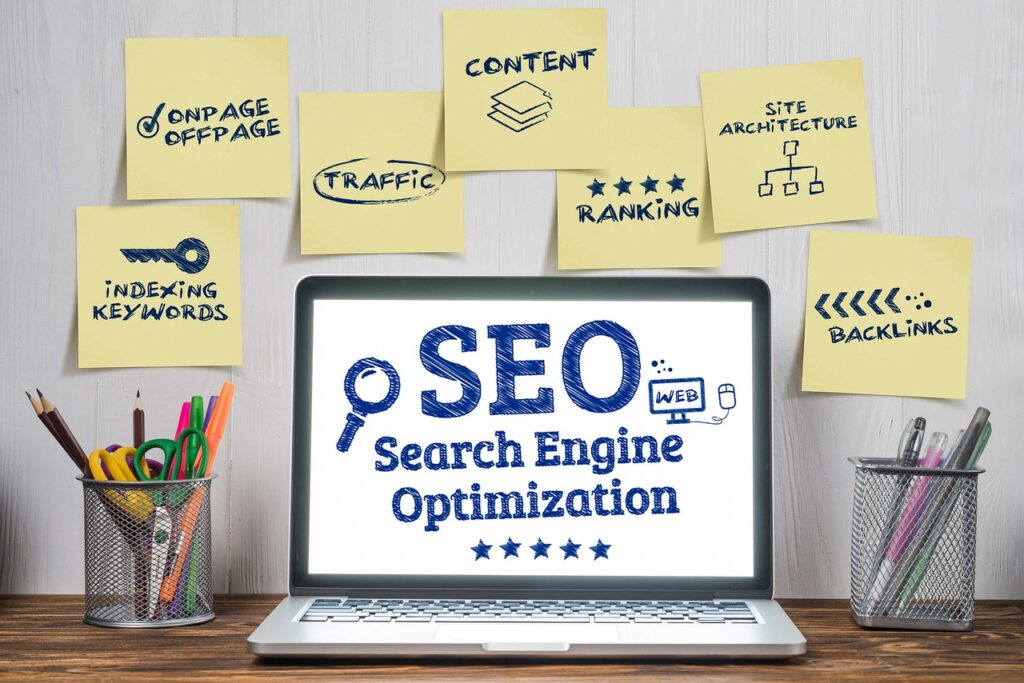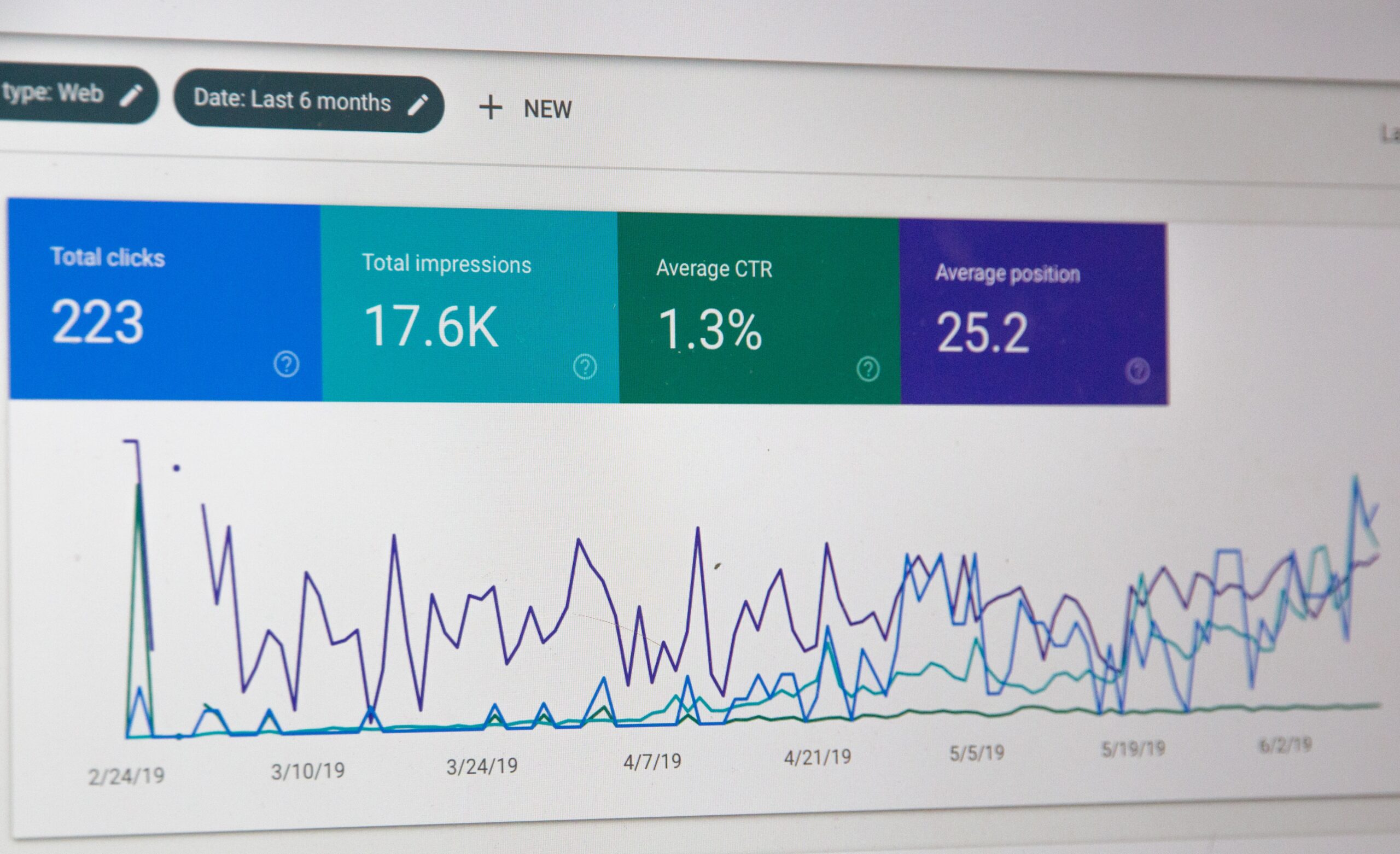Search engine optimization (SEO) and content marketing are two essential digital marketing strategies that work together to generate online success. Don’t believe us? SEO drives 1,000% more traffic to websites than social media, while the number one on-page SEO factor is content.
Without SEO, even the best content can end up buried on page 9 of Google’s search engine result pages (SERPs). Likewise, with no content to back it up, it’s almost impossible to achieve and maintain a high-ranking website.
SEO drives 1,000% more traffic to websites than social media, while content is the top on-page SEO ranking factor.
Understanding both components means knowing how they work together within a successful SEO content marketing strategy and how to use this relationship to your advantage.
This complete guide to SEO content marketing will explain everything you need to know to improve the visibility of your website and increase your organic traffic.
In this guide:
- Understanding SEO content marketing
- The different types of SEO-content
- How content marketing helps SEO
- How to create an SEO content marketing strategy
- How to write SEO content
- How to measure and analyze SEO content performance
Let’s get stuck in!
Understanding SEO content marketing

An integrated content marketing and SEO strategy is the winning combination for driving users to your site. But it’s important to understand what these two concepts represent individually as well as together:
What is SEO?
SEO is a marketing process designed to increase the quantity and quality of traffic to your website from organic search results on Google and other search engines.
SEO includes technical approaches such as enhancing metadata, constructing strategic sitemaps, and fixing broken links. But another essential element of SEO involves optimizing a website for its most valuable keywords to increase its search engine ranking.
What is content marketing?
Content marketing is the creation of original website content in the form of landing page copy, web copy, product descriptions, blogs, and more. This content is not intended to sell, but rather to educate, empower, or entertain visitors, nurturing interest and building prospects’ and customers’ trust.
What is the role of SEO in content marketing?
A successful content marketing strategy uses SEO to optimize content. It embeds natural and relevant keywords that users are actively searching for and presents content in a way that enhances the user experience.
When search engines crawl a website, they rank its content based on relevance, quality, and usefulness. Good SEO practices make it easier for Google and others to understand the quality of a website — and rank it more highly. This then improves your business’ visibility and secures consumer trust faster.
Different types of SEO content
Some types of content you can improve with SEO include:
- Landing pages – The main product pages on your website.
- Blogs and articles – Written content including everything from in-depth guides to short news articles and listicles.
- eBooks – Long-form content that creates awareness about a topic relevant to target customers.
- Whitepapers – Data-driven documents issued to identify a problem and propose a resolution involving products or services offered.
- Case studies – Content showcasing successes with your or someone else’s business.
- Infographics – Annotated graphics that offer visual appeal and informative content. Since these aren’t crawlable, infographics must be optimized through alt text or by pairing them with a fully-optimized written piece, such as a blog or case study.
- Videos – These can’t be crawled either so it’s important to optimize videos for each channel through appropriate tags and headlines or to present them alongside optimized written website content.
How content marketing helps SEO

While great content must rely on SEO to reach its full potential, the relationship between SEO and content marketing is mutually beneficial. Content SEO offers relevant, valuable information to your target audience in a way that delivers meaningful results:
Higher ranking and improved online visibility
It’s simple: high-quality content helps your site climb the search rankings. High-quality, SEO-friendly content not only dictates whether users will see your page but how long they’ll stick around once they do. Make content your priority when thinking about SEO and your site will be infinitely more visible to those who are looking for what you offer.
Increased brand awareness
A high Google ranking increases your online visibility and your position as an industry authority. Content marketing SEO will ensure your content matches search queries and increases your brand awareness, which will in turn grow your engagement and lead to more clicks.
With great content to back up your brand, people will know what you stand for, how you can help them, and how the information you offer is a true representation of your organization.
Improved brand trust and credibility
Many elements go into establishing your website’s credibility and authority with search engines like Google. These include an effective user experience, reliable information, trustworthy information sources, and natural links. All of these are also necessary for optimal content marketing SEO. And, while you can’t expect to build trust and credibility overnight, committing to offering value through optimized content is one of the best places to start
Enhanced user experience
An excellent user experience is the epitome of marketing success. Quality content created with SEO in mind makes for a much smoother user experience, and, since Google has learned how to interpret whether a site offers a positive or negative user experience, serving your users well will also maximize your organic SERP ranking.
More conversions
While working hard to boost brand awareness, build trust, and offer customers an excellent user experience, the ultimate payoff will come in the form of greater engagement and conversions.
By offering users regular, valuable, and trustworthy content that matches their searches and answers their questions, content marketing SEO encourages them to invest in your brand.
How to create an SEO content marketing strategy

Now you know the value of content marketing SEO, here’s how to create a strategy that maximizes its potential:
Identify your target audience
The first step towards creating content that resonates with your audience is to know who they are.
In-depth audience data analysis can tell you more about the people that engage with your website and products, from age to purchasing behavior. From there, you can create buyer personas and craft personalized content.
Define relevant topics and keywords
Now you know who you’re trying to reach, it’s time to define the core area of expertise that will guide the topics you’ll cover, your keyword matches, and SEO content creation.
This allows you to develop content that your audience wants to read that’s optimized with the keywords they’re most likely to search for.
Create regular, high-quality content
Google rewards well-written, informative content but the search engine also expects regular new material. Most industry experts agree that posting two to four blog posts per week is ideal.
If you have a new site or you’re planning a website revamp, it’s wise to build up a stash of great articles and other content first. This makes it easier to maintain the momentum you’ll gain once you start posting.
Improve existing content
Creating the kind of useful content that forms the cornerstone of your strategy is only possible if that material remains relevant and up-to-date. Even evergreen content may need adjusting over time, while links that no longer exist should be changed or removed.
Ensuring your site is a reliable and fresh source of useful information is the best way to keep your audience and Google happy.
Work with SEO content marketing experts
Trying to establish an SEO content marketing strategy can be difficult and time-consuming if you go it alone. Working with Scribly’s content marketing experts will provide you with expertise, a customized strategy, optimized content, and ongoing support for a smoother, more successful strategy from the start.
How to write SEO content
Although Google search algorithms change around 5,000 times per year, there are many tried and tested ways to ensure that the content you write is as optimized as possible for SEO:
Write for your audience
Rather than creating content to satisfy Google’s algorithms or as a way of promoting your services, always write with your audience in mind. First, aim to engage the real people reading your content and then incorporate SEO to ensure they see it.
Create compelling headlines
Never underestimate the power of an effective headline on SEO. Remember, the title and meta description are what show up in the search results, so make them count.
Find the right keywords
For most topics, there are popular main keywords and less popular long-tail keywords. With popularity comes more competition so you’ll need to perform keyword research and choose the right keywords for the content you’re writing.
Use keyword-rich phrases and related words
Using relevant, keyword-rich phrases in your titles, tags, meta descriptions, slugs, subheadings, and content body in a natural, thoughtful way helps both Google and your readers know what your post is about. Using words related to the topic and chosen keywords also ensures more efficient search engine optimization.
Structure your posts
Even the most original, inspiring posts can lose your reader long before the conclusion if they lack structure. Breaking up your post into smaller paragraphs with subheadings makes them easier to read while also allowing for better back-end organization and SEO tagging. This is even more important for longer blogs of around 2,000 words, which are often more likely to gain a page-one ranking.
Add links
Internal links help users navigate your website. Plus, backlinks are an important ranking factor for SEO. While external links can back up your claims for more authority, only ever reference high-quality, non-competitor sites.
Incorporate images
Using photographs, videos, or infographics alongside written content can allow for easier reading and better visual flow. Plus, you can optimize images for SEO to attract more readers.
Think local
Mobile searches now make up 60% of all online searches, with mobile users often looking for local businesses. If you want to target local consumers, start including more geo-specific terms in your keyword phrases, titles, and subheadings.
How to measure and analyze SEO content performance

Measuring and analyzing your SEO content performance helps identify where your strategy is working and where there’s room for improvement. Some KPIs for SEO content to track include:
Organic traffic
If your organic traffic is increasing then you’re achieving a key SEO objective: attracting more people to your website.
You can easily track this metric via the Performance tab on Google Search Console.
Keyword rankings
The higher your search rankings, the more visible you are, the more leads and prospects you’ll reach. But, you want to make sure that you track your rankings for the right target keywords (read: ones that are relevant to your brand and offering).
To monitor how your search positions for your target keywords are changing, use the likes of SEMrush or Ahrefs.
Search visibility
Search visibility measures how visible your brand is in the market through your SERP positioning. This metric is closely tied to your business growth so it’s one of the most important ones to track.
To monitor it, use the Ahref Rank Tracker and search for the main keywords (not long-tails) that your target audience is searching for.
Organic CTR
Click-through rate (CTR) measures the ratio of clicks on your page link to the total number of users who viewed the search results.
A high CTR means high traffic, as the people viewing your snippet are motivated to click on your page. A low CTR, however, means that your search snippet isn’t meeting users’ expectations despite a good SERP. To monitor your organic CTR, use Google Search Console.
Organic conversions
Conversions include purchasing products, signing up, or subscribing to a service. This is arguably the most important SEO KPI as it directly ties your marketing efforts with your revenue.
Track your conversions from organic traffic using Google Analytics 4.
Your guide to SEO content marketing
SEO increases the visibility of your website to attract more high-quality traffic. Content marketing focuses on driving profitable customer relationships through valuable and relevant content. Together, they have changed the digital marketing world.
For expert support and guidance on how to achieve SEO content marketing success, enlist the Scribly team. Get a quote today and find out more about the benefits of our full-service B2C marketing support.




